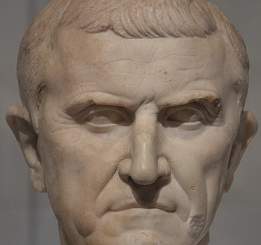Ancient Rome: Timeline

Ancient Rome Timeline
The Ancient Roman civilization, most known for its rulers, military accomplishments, dominance in the Mediterranean region, and senate, thrived for thousands of years. But how did a small city, which was founded around the mid-8th century BC by legendary figures Romulus and Remus, grow to become one of history’s most influential and greatest civilizations?
In the article below, World History Edu presents a complete timeline of ancient Rome, from its beginning around the 8th century BC to its (i.e. the Western Roman Empire) fall in 476 AD and then its ultimate capitulation in 1453 AD, when the Byzantine Empire (i.e. the Eastern Roman Empire) fell to the Ottoman Empire.
Timeline of Ancient Rome
753 BC: Twin brothers Remus and Romulus, also known as the children of the Roman god of war Mars, found the city of Rome. The death of Remus leaves, Romulus as the ruler of Rome, i.e. first king of the Roman Monarchy.
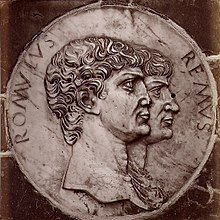
The name of Rome comes from its founder’s (Romulus) name | Image: Romulus and his twin brother Remus from a 15th-century frieze, Certosa di Pavia
753 BC – 716 BC: Founder-king Romulus’ reign sees the establishment of some of the first social, political, religious and legal structures that would define Rome for many, many years. Romulus abducts many women of marriage age from the Sabines. He also defeats towns such as Antemnae, Caenina, and Crustumerium, expanding the boundaries and influence of Rome.
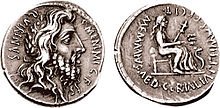
In 716 BC, legend has it that Rome’s founder Romulus disappeared in a whirlwind, never to return. It’s been said that a group of senators murdered the king. In some other accounts, Romulus was taken to heaven by Mars, the god of war. | Image: Roman Denarius with Romulus as Quirinus
Romulus’ successors
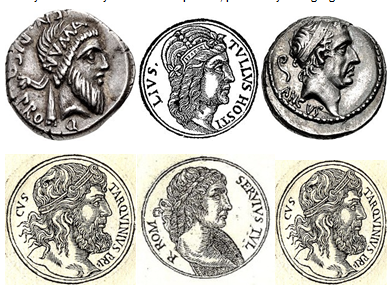
The Six Kings of Rome that came after Romulus | Image (from top left to bottom right): Numa Pompilius, Tullus Hostilius, Ancus Marcius, Tarquinius Priscus, Servius Tullius, and Lucius Tarquinius Superbus
716-715 BC: The one-year interregnum, a period between the reign of one monarch and the next monarch. Control of Rome rested in the hands of the Senate.
715 BC: After the death (or disappearance) of Romulus in 716, who had reigned for about 37 years, Numa Pompilius, a member of the Sabines, was elected by the Senate to succeeded Romulus to the throne in the year 715.
673 BC: Following the death of King Numa, Tullus Hostilius, war-hawk, became king of Rome. His reign lasts until 642 BC, when he is struck by a lightning bolt from Jupiter, according to mythological sources.
642 BC: Ancus Marcius, a son of Marcius and Pompilia, becomes the fourth legendary king of Rome. His reign spans from 642 to 617 BC. Ancus was elected by the assembly of the people to the throne. Ancus’ reign was a mix between Numa’s peace-loving policies and Tullus’ aggressive policies.
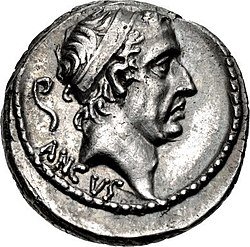
Ancus, the legendary fourth king of Rome, died in the year 617 BC from natural causes. He was aged 60. He was succeeded by one of his courtiers Lucius Tarquinius Priscus. | Image: Ancus Marcius depicted in a 57 BC denarius
616 BC: Lucius Tarquinius Priscus, a member of King Ancus’ court, is elected by the people to become king.
579 BC: After reigning for about 38 years, King Tarquinius is assassinated in a plot cooked up by one of the sons of the previous king Ancus Marcius.
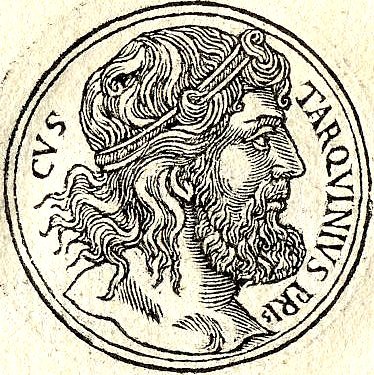
Legendary 5th king of Rome, Lucius Tarquinius Priscus, reigned from 616 BC to 579 BC. He was Rome’s first Etruscan king and was responsible for expanding the boundaries of Rome through military campaigns. He also put up many buildings and temples. | Image: Lucius Tarquinius Priscus, 16th-century depiction published by Guillaume Rouillé
578 BC: Servius Tullius becomes the sixth king of Rome, reigning from 578 to 535 BC. Servius, like his predecessor King Tarquinius, hailed from the Etruscan dynasty. Through his marriage to Targuinia, he was the son-in-law of Targuinius, according to the historian Livy.
535 BC: King Servius Tullius is murdered by his daughter Tullia and son-in-law Lucius Tarquinius Superbus. The latter, who was also known as Tarquin the Proud, goes on to become the seventh king of Rome.
509 BC: After ruling for about 24 years, King Lucius Tarquinius Superbus is overthrown in a popular uprising (led by some Senate members) in 509 BC.
Roman Republic (509 BC – 27 BC)
509 BC: The era of monarchy ends with the overthrow of King Tarquinius by a group of influential men led by Lucius Junius Brutus. Rome becomes a republic, which is ruled by an elected body, the Senate.
496 BC: The Republic secures victory over a number of Latin cities in the Battle of Lake Regillus.
477 BC: Rome suffers a heavy defeat while fighting against the Etruscan city of Veii in the Battle of the Cremera.
458 BC: Rome is the victor in the Battle of Mount Algidus.
390 BC: The Roman Republic is attacked and defeated by the Gauls, led by the chieftain Brennus, in the Battle of Allia River. The city of Rome is subsequently looted and set ablaze by the Gauls.
343 – 341 BC: Rome secures victories against the Samnites, an ancient Italic people in south-central Italy.
340-338 BC: Rome emerges the victor during the Latin war as it defeats a Latin coalition.
314 BC: Rome makes tremendous progress in its war efforts in the Second Samnite War.
305 BC: Rome defeats the Samnites at the Battle of Bovianum.
290 BC: Rome is victorious against Samnites rebels.
282 BC: The Etruscans are completely defeated by the Romans at the Battle of Populonia in 282 BC. Rome therefore became the dominant power in Italy.
280 BC: Rome faces off against the Greek king Pyrrhus, king of Epirus.
280 BC: At Heraclea, Rome suffers a defeat at the hands of Pyrrhus’ army that used a lot of elephants.
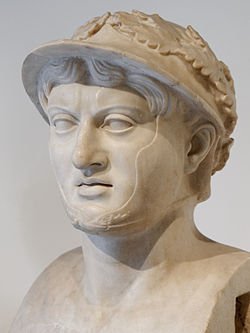
One of Rome’s arch enemies, Pyrrhus was a cousin of Alexander the Great. Like Alexander, Pyrrhus was a very ambitious ruler eager to expand his territory into the western Mediterranean. To attain his goal, he was willing to sacrifice as many men. It is from his name that the term Pyrrhic loss emerged. | Image: A marble bust of Pyrrhus from the Villa of the Papyri at the Roman site of Herculaneum, now in the National Archaeological Museum of Naples, Italy
279 BC: At the Battle of Asculum, Pyrrhus wins, although at a steep price, against the Romans, led by consuls Publius Sulpicius Saverrio and Publius Decius Mus.
275 BC: The last battle of the Pyrrhic War, the Battle of Beneventum, erupts, pitting Rome (led by consul Manius Curius Dentatus) against King Pyrrhus of Epirus in Greece. Rome comes out the victor.
264-241 BC: The First Punic War sees Rome war against Carthage, a North African City (in today’s Tunisia). Rome is victorious and peace agreement is signed between the two powers on the western Mediterranean.
218-201 BC: The Second Punic War, the second of three major confrontations between Rome and Carthage, sees Rome incur a number of defeats at the hands of Carthaginian general Hannibal.
219 BC: Carthaginian general captures and sacks the city of Saguntum, a Roman ally.
218 BC: Rome loses to the Carthaginians at the batlle of Trebia.
217-216 BC: Rome suffers defeats at the battle of Lake Trasimene in 217 and the battle of Cannae in 216.
215-210: Rome is able to repel the Carthaginians from capturing Sicily and Sardinia.
211 BC: Rome is defeated while mounting an offensive in Iberia.
209 BC: A military astute Roman commander Publius Scipio Africanus captures Carthago Nova (today’s Cartagena, Spain)
208 BC: General Scipio Africanus defeats Hasdrubal at the Battle of Baecula.
206 BC: Scipio levels a hard blow to the Carthaginians in Iberia.
204 BC: Under the leadership of Scipio, Rome invades Carthaginian territories in Africa.
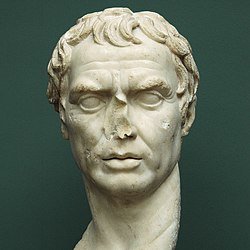
Publius Cornelius Scipio Africanus (c. 236-183 BC) was a Roman general and later consul whose military exploits helped secure Rome victory over her arch rival Carthage during the Second Punic War. Scipio Africanus defeated Carthaginian general Hannibal at the Battle of Zama in 202 BC.
202 BC: Rome defeats Hannibal and his Carthaginian army at the Battle of Zama.
201 BC: Rome and Carthage sign a peace treaty.
179 BC: The Third Macedonian War erupts between Rome and Macedon, who were led by King Perseus, son of King Philip V of Macedon.
168 BC: The Roman Republic defeats the Macedonians at the Battle of Pydna.
150-148 BC: The Fourth Macedonian War sees Rome come out victorious.
149-146 BC: The last war fought between Rome and Carthage sees a Roman victory and the destruction of Carthage.
146 BC: Rome defeats the Achaean League in the Battle of Corinth.
133 BC: Tiberius Gracchus, a reformer in Rome, is murdered by some section of the senate.
123 BC: Gaius Gracchus, the brother of Tiberius Gracchus is murdered.
107 BC: Military commander Gaius Marius is elected consul.
88 BC: Cornelius Sulla is elected consul.
83 BC: Cornelius Sulla marches his army into Rome and seizes control.
77 BC: A Roman commander Gnaeus Pompeius Magnus (Pompey the Great) quells an uprising in Hispania.
73 BC: An uprising by gladiator/slave Spartacus begins.
71 BC: Marcus Licinius Crassus ends the Spartacus-led gladiator/slave uprising in Italy.
70 BC: Pompey and Crassus are elected consuls.
61 BC: The First Triumvirate is formed among Julius Caesar, Marcus Licinius Crassus, and Pompey.
59 BC: Julius Caesar is elected consul.
53 BC: Crassus dies in the Battle of Carrhae, bringing an end to the First Triumvirate.
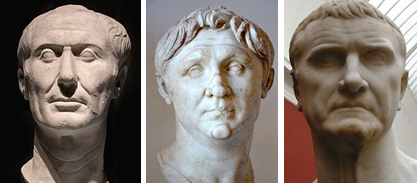
The First Triumvirate (From left to right): Julius Caesar, Pompey the Great, and Marcus Licinius Crassus
49 BC: Julius Caesar forces Pompey out of Rome.
48 BC: Caesar defeats Pompey at the Battle of Pharsalus. That same year Pompey is assassinated by officials of Egypt’s Ptolemy XIII.
45 BC: Julius Caesar rises to become the first dictator of the Rome, bringing an end to the Roman Republic.
44 BC: Julius Caesar is assassinated by Marcus Brutus, Gaius Cassius, and other allies of those two senators that wanted the return of the Roman Republic.
43 BC: The Second Triumvirate is formed among Octavian (later emperor Augustus), Julius Caesar’s adopted son, Mark Antony and Marcus Lepidus.
42 BC: Julius Caesar’s supporters – i.e. the Second Triumvirate – defeat the men who assassinated Julius Caesar, i.e. Brutus and Cassius, at Philippi in Macedonia.
36 BC: One of triumvirs in the Second Triumvirate, Lepidus, is forced into exile, and his lands and offices are given to Octavian.

In 61 BC, the First Triumvirate is formed among Julius Caesar, Marcus Licinius Crassus, and Pompey. | Image: Famous Roman general and statesman Julius Caesar (100 BC – 44 BC)
31 BC: Octavian defeats Mark Antony and his ally/wife Cleopatra VII of Ptolemaic Egypt at the Battle of Actium.
30 BC: Antony and Cleopatra seek refuge in Alexandria, Egypt, before both committing suicide.
Roman Empire (27 BC – 476 AD)
27 BC: Julius Caesar’s grandson and adopted son/heir Augustus (also known as Octavian or Gaius Octavianus) becomes the ruler of Rome, i.e. “Princeps”.
14 AD: Caesar Augustus dies.
14 AD – 68 AD: Immediate successors of Augustus – Tiberius, Caligula, Claudius, and Nero – reign. They are referred to as the Julio-Claudian dynasty.

Rome’s first emperor Caesar Augustus died in 14 AD
68 AD: Servius Sulpicisu Galba becomes emperor following Nero’s suicide. He is the first emperor in the Year of the Four Emperors, which marks the beginning of the Flavian dynasty (66 AD – 96 AD).
69 AD – 79 AD: The Year of the Four Emperors continues with the reigns of Otho, Vitellius, and Vespasian.
80 AD: Rome’s 50,000-seater Colosseum is built.
121 AD: Rome, under Emperor Hadrian, builds the Hadrian Wall across northern England to prevent the barbarians from running wild into its territories.
306 AD: Rome has a new emperor in the person of Constantine (also known as Constantine the Great). The emperor will convert to Christianity in his lifetime.
380 AD: Emperor Theodosius I makes Christianity the official religion of the empire.
395 AD: Rome is partitioned into two blocks – the Western Roman Empire and the Eastern Roman Empire (the Byzantine Empire), which is based in Constantinople (modern day Istanbul).
410 AD: The Visigoths pillage and burn Rome as the once mighty empire begins to decline.
476 AD: The generally accepted year in which the Western Roman Empire ended. Rome’s last emperor suffers a huge defeat at the hands of German Goth Odoacer.
1453 AD: The Eastern Roman Empire folds up as its capital Constantinople is overrun by the Ottoman Empire.
Other interesting facts
According to historian Livy, Lucius Tarquinius Superbus, also known as Tarquin the Proud, was either the son or grandson of Lucius Tarquinius Priscus, Rome’s fifth king. For the murder of his predecessor and misuse of the public coffers, King Tarquinius was overthrown in an uprising led by Lucius Junius Brutus.
In some accounts, Tullus Hostilius was struck by Jupiter after he had angered the Roman god. Other accounts say that he succumbed to a plague.
There was a one-year interregnum (716-715 BC), i.e. a period between the reign of Romulus and Numa Pompilius (753-673 BC).
Numa Pompilius (753-673 BC), the second king of Rome, made a number of contributions to the society, including creating the Vestal Virgins, the Roman calendar, cults of Romulus, Mars and Jupiter, and the office of pontifex maximus (office of the chief high priest).
FACT CHECK: At worldhistoryedu.com, we strive for utmost accuracy and objectivity. But if you come across something that doesn’t look right, don’t hesitate to leave a comment below.
